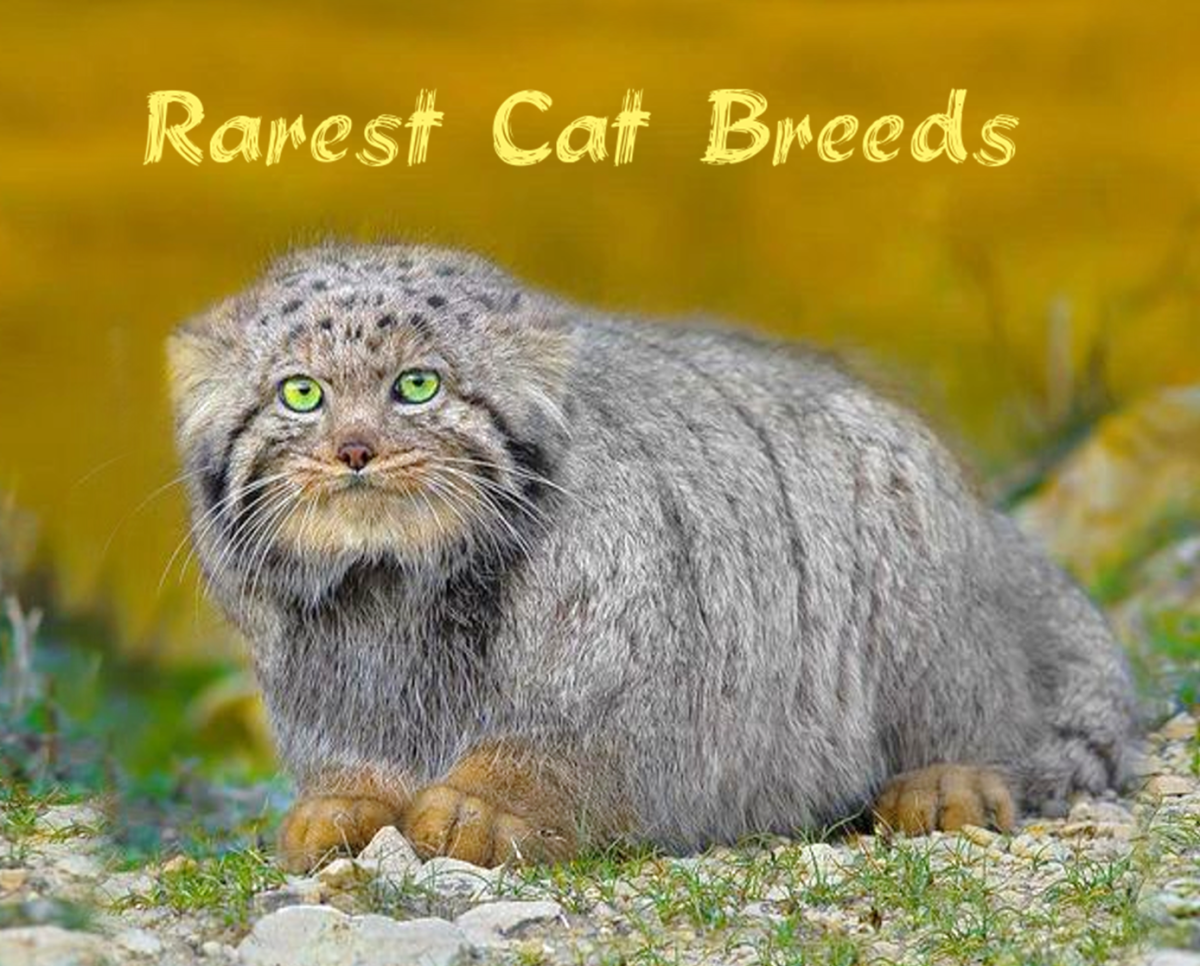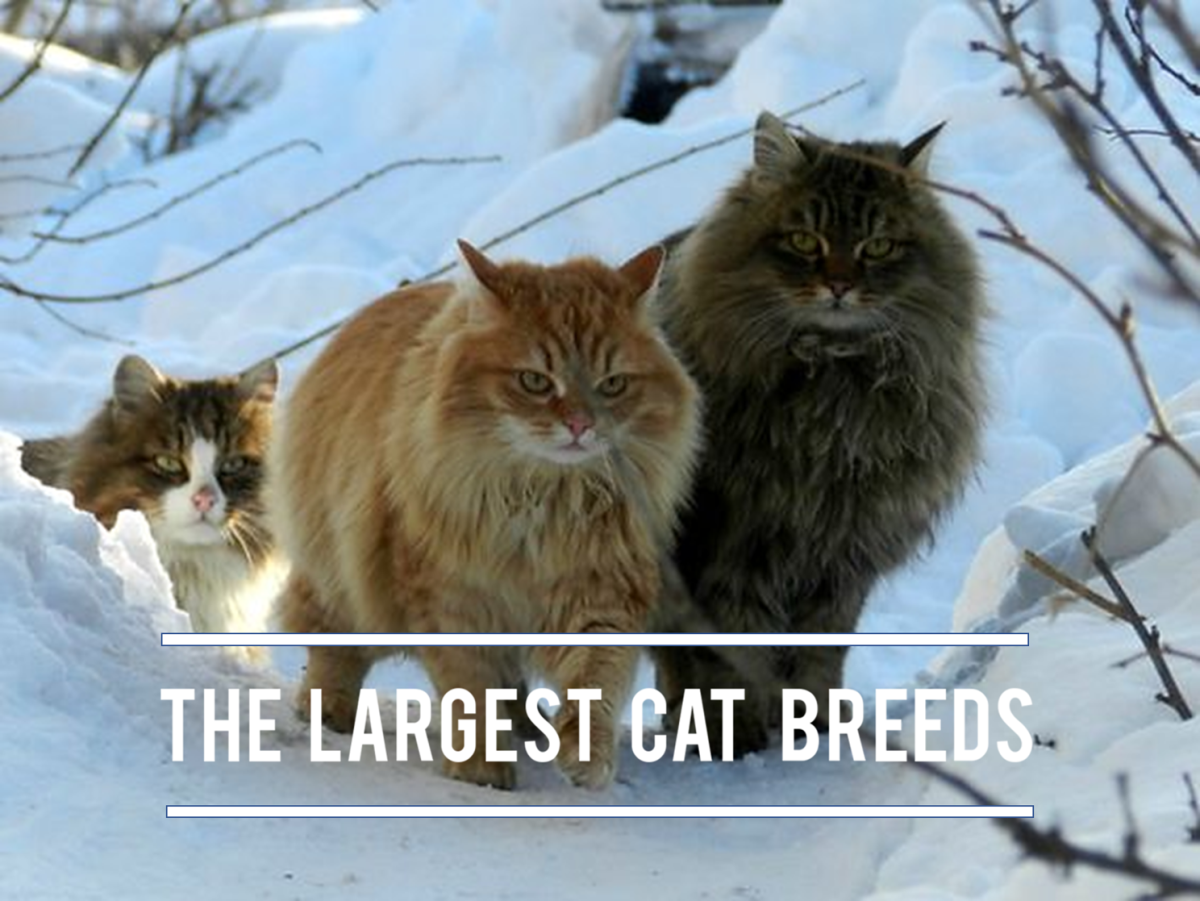Shake A Raccoon
Queen Samantha of the Chesapeake
When we agreed to rescue an abused Great Dane, we were made aware that she had some idiosyncrasies in terms of her behavior. At first, it seemed the biggest of these was her paranoia in being left alone.
She'd been rescued from a physician's home where she had been crated around the clock, devoid of human contact for the most part. She literally couldn't stand to be alone and would almost go berserk if you left her.
The only time she would tolerate was being left in the car for she loved to ride. She loved riding in the car so much, that you could not under any circumstances leave your car windows down when parked. She'd leap in and be sitting in the driver's seat waiting for you. It was difficult once she was there to unseat her, despite my many pleads reminding her that she didn't have a license to drive.
Living on a heavily wooded farm in rural West Virginia, Queen Samantha (or Queenie, as we called her) soon settled in and became a much beloved member of our family. When I say she was my constant companion, that is no exaggeration. If you walked across the room, she would escort you each and every time. Escorting in her mind, also meant she had to be touching you, or leaning against you in some manner.
However, Queenie would leave you in a heart-beat, if she detected in any manner that a raccoon was nearby the house. You could take her out on a walk away from the house and what she regarded as her "territory" -- and she would ignore raccoons, but let one get near her house and her family, and it was "shake a coon" time.
This worked for all of us, as the raccoons were a pest when it came to getting into the chicken house. Other predators wouldn't come near it, as our eight hunting dogs were in a kennel right next to it. Raccoons, however, were quickly smart enough to realize the dogs were penned up and couldn't get at them.
Queenie was a fawn colored Great Dane, who when standing tall could look my six-foot husband in the eyes. Her method of hunting raccoons was to tree them and stand stretched at the base of the tree, leaping at them, and tormenting them. Heaven help the coon that unwittingly chose a young tree that wasn't sturdy enough to withstand her shaking the tree. There was never a time when any raccoon got the best of her.
She knew that sooner or later that raccoon was coming down that tree and once on the ground she could out-run them and out fight them. She would simply grab them by the back of the neck and with a few vigorous shakes, they were dead. Once a dead raccoon, they held no interest for her. Her job was done and it was time for a drink of water and a nap.
Our cabin sat on the top of a hill overlooking a large pond and the hollow below. It was a late Friday night when everyone human and non-human was settled in for the night. We soon noticed that the hair on the back of Queenie's neck was standing up, and she was staring intently outside. Soon, her suspicions were confirmed when the country alarm system -- our domestic geese -- sounded the alarm that something or someone who didn't belong was outside.
Grabbing his rifle, his railroad lantern, and calling Queenie to his side, Bill went out the door to investigate. I stood watching from the safety of the picture window. Within seconds, Queenie raced to the other side of the pond and stood tall against a tree in full attack mode.
The geese were soon squawking at full volume, the African guineas were sounding their own alarm and running around like crazy, the chickens were cowering in their hen house, and our hunting dogs were beginning a bark-a-thon destined to be heard for miles.
Now certain what we were dealing with, I flipped the switches on at each floodlight mounted in the yard, and our place was lit up like a gaudy Christmas display.
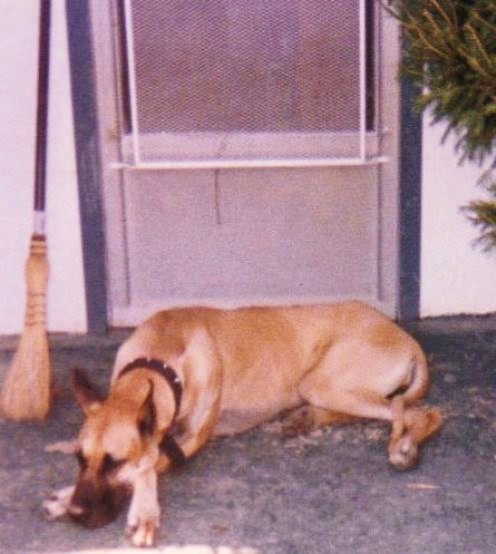
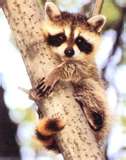
Mamma Coon and Her Five Youngsters
Queenie had an old mamma coon and her five youngsters treed in a cypress tree that stood half in and half out of the edge of the pond. Bouncing around that tree trunk, our light fawn colored Great Dane soon was caked in mud and decaying leaf muck.
I watched Bill attempt several times to shoot the raccoon down from the tree, but he didn't seem to get his gun aimed in the right manner.
Soon, the widow living nearest to us (two miles down the hollow) was angrily complaining on the phone that our dogs were making her dogs bark. An hour later, some of the local men started showing up in their pickups, as word was out thanks to the widow with the big mouth. Two hours later, it was a regular hunting party in the loosest terms.
Nine men, some standing around at the back of their pickups, others settling in camping chairs circled the tree at a short distance. I didn't have to go down there to know that money was being placed in a pot on who would win the raccoon vs. dog war. I didn't have to worry about my husband getting cold once I saw Ralph pass out his famous home made hooch.
No point in watching the spectacle of soon-to-be drunk hillbilly men, a crazy dog, and a raccoon. Earplugs in to muffle the noise of the still barking dogs and the stereo turned up loud -- I tried to get some sleep as it was nearing midnight.
Sometime near dawn, I got up when I realized I was still alone in the house. Down on the pond, the dog was laying at the base of the tree still waiting for her prey. Two of the men had given up or given into their wives rules and had gone home. One saner, or the more soberer one, was asleep in the cab of his pickup. The other five were either napping or passed out with rifles beside or in their laps, perched in camping chairs, completely unaware -- judging by their heads resting on their chests.
That was too funny to resist the temptation of sneaking down the hill to take a picture of. I thought their wives might want to have proof of why they were out all night doing-God-knows-what.
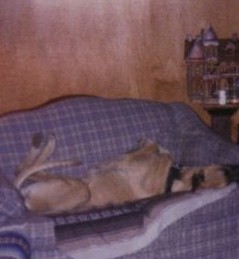
The Shake-a-thon
Camera in hand, approaching the edge of the pond, I noticed that despite her laying at rest, Queenie was wide awake, eyes still focused above her. The only sounds now were snores and snorts, and that other famous unmentionable free-will sound that grown men seem to delight in making when around other men.
Just as I started back to the house, all mayhem and foolishness broke loose when for whatever dumb reason, that mamma coon decided it was time to come down out of the tree. I whirled around to see her in mid-air leaping into the pond with Queenie diving in right behind her.
Apparently, our geese were watching too because their shrieks and the splashing of the dog and raccoon had West Virginia men half falling out of their canvas chairs, as they came awake in a hurry. Some, in their hooch inspired alertness, found themselves on the ground tangled in their chairs.
Fifteen year old Ace slid from his chair to the muddy banks of the pond, tried to stand up in his excitement and was now in the water. Fuzz, his father, trying to save his boy, tripped over his own untied boot and landed face down. Kenny was now standing up hollering something his devout Christian wife would have washed his mouth out for outside his pickup. Easy going Ralph tried to get a scope on the raccoon. My husband just stood quietly watching in his usual nothing-upsets-me fashion. This was soon to change, as the five young raccoons who'd been up in the tree all night came scurrying down that tree. They scattered in all directions trying to get away.
It was a comical sight of men and raccoons all running in different directions, with all youngsters escaping safely. Meanwhile, Queenie and old mamma raccoon were having a time. That Great Dane almost lost the raccoon, as she was not as fast in the water as the raccoon. Yet, somehow she managed to grab her by a foot and drag her to the muddy shore. Soon, a whole lotta shaking ended the drama of it all.
In the end, the human winners split the pot of cash. Then, all the men headed down to the local diner in our one- stop-light-town, to tell tales of dogs and raccoons. Queenie and I went back up to the house so we could give her a bath. The gentle couch potato that she was by nature, was so tired she could barely stand, and she was even too tired to eat.
By noon, she and my husband were snoring away on the separate couches in the living room, where they would stay unmoving in tandem hunting dreamland until the next morning.
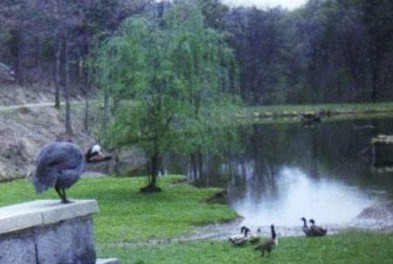
Great Dane Standing Tall

Back When He Was A Popular Fella
Raccoons are cousins of the bear and in the Ursus family, more closely the cousins of the long-tailed bears in the animal kingdom.
The raccoon or "coon" as he is known over much of the places he lives, is familiar to many. To some they are cute, to others they are pets, some see them as dangerous, and still others see them as a nuisance. There are good and valid reasons for all of those viewpoints.
In past, the raccoon owed his popularity to his fur in a time when coonskin coats were made. Back then, the general rule was that the darker the raccoon, the more valuable was his fur. Raccoons were even bred for the prized black specimens and albinistic specimens. Thankfully today animals aren't losing their lives as much as they did in the past all in the name of fashion.
The raccoon is a stockily built animal about two feet long. His tail, about ten inches long, has rings of black and light fur. His muzzle is sharp, and across his face is a black strip that looks like a mask.
The color of the coat varies considerably. Brownish gray is the chief color. However, some specimens have much darker brown with gray tips on the longer hairs.
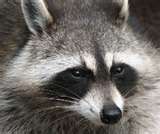
The raccoon is found throughout most of the United Stats. To the North its range extends but a short way into southern Canada, but to the South it ranges through Central America to northern South America.
The raccoon likes water and is a strong swimmer. Its favorite home is by the shores of ponds and lakes, or along streams where it can puddle in the water for morsels of food. It is very fond of crayfish, mussels, and other forms of water life which it finds by feeling in the mud with its forefeet.
It also eats fish, frogs, birds, eggs, reptiles, fruit, and vegetables. It enjoys raiding cornfields when the corn is on the ears nearly ripe.
The raccoon is a good climber and generally makes its den in the hollow of a tree. The young are usually born in April or early May. There are generally from three to six in the litter. In June the young may appearing sunning themselves in the branches outside the den hole.
A month later, they accompany the mother on her hunting expeditions. These young stay with the parents until the following spring.
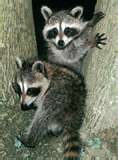
Habits of Raccoons
The raccoon goes into a partial hibernation in Northern states. During the colder part of the winter they may den up in a hollow tree, very often the entire family together, and remain there until the approach of spring. Their thick fur keeps them warm.
The raccoon is strictly nocturnal. It is seldom abroad during the day, although occasionally it takes sun baths well up among the branches of a tree.
Raccons are notoriously smart and sometimes this makes them an unwelcome neighbor. If caught young and brought up by hand, raccoons make interesting pets. However, it is seldom that a raccoon captured when fully grown ever becomes thoroughly tame.
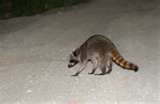
Crab Eating Raccoon
In Northern South America, there is a variety of Crab-eating raccoons. They are quite similar to the common raccoon in outward appearance, but they have much shorter hair.
Consequently, it has the appearance of a much longer-legged animal.
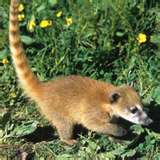
The South American Coati
The Coati is about the size of the raccoon, but has a long tail and a long snout-like nose. There are two main forms of these animals, the White-nosed Coati, found from northern Mexico to Panama -- and the Red Coati, found throughout northern South America, as far south as Paraguay.
The Coati is more arboreal in habits than the common raccoon (Arboreal meaning living in trees).
Generally going about in droves, Coatis search both the ground and trees for food, which consists largely of fruits and vegetable matter. They also eat reptiles, birds, eggs, and insects.
They do most of their hunting during the daylight hours.
A Coati makes an interesting and amusing pet (although not recommended) and is often kept by natives in South America. It has an endearing kind of awkwardness.
It is a myth that they are ant eaters, but because of their long snouts will often be touted as ant eaters.
Coatis Visits in Costa Rica
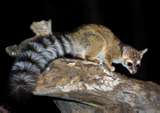
The Little Cacomistle (Ring-tailed Cat)
Another cousin of the raccoon is the little Cacomistle, or Ring-tailed cat, an alert looking animal that dwells in western North America from Oregon south to Panama.
In general, the color of the Cacomistle is pale yellowish gray with numerous black hairs scattered over its back and head.
Its head and body are about thirty inches long, and its beautifully ringed tail is about fifteen inches long. The Cacomistle is known by many different names, including the Civet cat and Bassaris.
Costa Rica Sightings of Raccoon Family Cousins
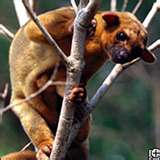
The Kinkajou
The Kinkajou is a long-bodied, short legged reddish brown animal with a prehensile, or grasping tail. The Kinkajou is also another cousin of the raccoon.
It has often been misnamed "honey bear" which it is not. This stems from it being fond of honey. They primarily feed on fruit and in the past have often been popular pets.
The Kinkajou inhabits the forests from central Mexico to central Brazil. Arboreal in habit, it rarely descends to the ground, finding living among the branches of the trees-- fruit and other vegetation and birds' eggs.
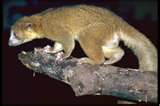
The Bassaricyon (Bassari)
The Bassaricyon looks like the Kinkajou and it too is a raccoon cousin. It looks so closely like the Kinajou that unless both animals are closely examined, they can be mistaken for each other.
However in skull characteristics, they differ widely. Skulls are one way by which animals are classified.
The Bassaricyon has forty teeth, the same number as the raccoon, while the Kinkajou has but thirty-six. In habits these creatures are much the same. The Bassaricyon is found in the forests of Central American and northern South America.

